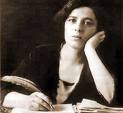It was Hobart's never-ending rainy weather that finally prompted me to drag my wet laundry down the street to the laundromat; a place I hadn't visited for over five years. Inside: the most wonderful of all things: warmth - and free warmth at that - most important in these chilly days of steadily rising Electricity bills. Also: that divine smell of laundry powder and heated fabric, reminiscent of clean sheets and freshly made beds.
While my laundry was whizzing around the insides of a rather clanging and cavernous dryer, I sat down to wait, opening my copy of Villette, by Charlotte Bronte.
Villette is a gorgeously evocative, and deeply engaging novel that also happens to be somewhat dark and depressing, continually touching on themes of loneliness and social isolation. Bronte uses images of snow, coldness, ghosts, and empty attics to portray the internal feelings of her chronically unhappy heroine, Lucy Snowe.
What I found interesting about Villette this morning, was the excerpt I read while sitting in the laundromat. Here, Lucy Snowe visits an art gallery and stands for many minutes contemplating what is easily identified as a typical Nineteenth Century Orientalist painting. I read:
It represented a woman, considerably larger, I thought, than the life. I calculated that this lady, put into a scale of magnitude, suitable for the reception of a commodity of bulk, would infallibly turn from fourteen to sixteen stone. She was, indeed, extremely well fed: very much butcher’s meat—to say nothing of bread, vegetables, and liquids —must she have consumed to attain that breadth and height, that wealth of muscle, that affluence of flesh. She lay half-reclined on a couch: why, it would be difficult to say; broad daylight blazed round her; she appeared in hearty health, strong enough to do the work of two plain cooks; she could not plead a weak spine; she ought to have been standing, or at least sitting bolt upright. She, had no business to lounge away the noon on a sofa. She ought likewise to have worn decent garments; a gown covering her properly, which was not the case: out of abundance of material—seven-and-twenty yards, I should say, of drapery—she managed to make inefficient raiment. Then, for the wretched untidiness surrounding her, there could be no excuse. Pots and pans—perhaps I ought to say vases and goblets—were rolled here and there on the foreground; a perfect rubbish of flowers was mixed amongst them, and an absurd and disorderly mass of curtain upholstery smothered the couch and cumbered the floor. On referring to the catalogue, I found that this notable production bore the name "Cleopatra." (186 - 187, Bronte, 1853)
Griselda Pollock, in her book Differencing the Cannon, wrote that Bronte's painting is not based on an actual work, but rather on a combination of images around the notion of 'Cleopatra'.
Orientalist paintings often portrayed decadent, sexualised, women idling away their lives in Harems. They were part of a Western and very racialised discourse about the exotic 'far East', one that Bronte engaged with in Villette, as well as in Jane Eyre.
The below painting, Leila, by Frank Dicksee, was painted in 1892, and is therefore obviously not the painting pondered by Lucy Snowe. It is, nonetheless, a perfect example of an Orientalist work and readily came to my mind as I read Bronte's description of the fictional 'Cleopatra'.

Describing Lucy Snowe's strong aversion to this painting, Bronte sets up a clear divide between the values represented by 'Cleopatra' and the values treasured by her heroine.
Straight-laced protestant Lucy condemns, in Pollock's words, the painting's "gross physicality, indecency, and indolency: coded signs of an unharnessed sexuality." Cleopatra signifies a sexualised, decadent, 'other',the antithesis of Lucy's characterisation.
Throughout Villette we are often told via the confiding first-person narration of Lucy, that decadence, sensuality, and frivolity are foolish and useless. These ideas seem a key message of the novel.
However, Lucy's authority as a narrator is continually undermined by her characterisation. Miserable, alone, cold, and aloof from others, she constantly watches people with a possessive, hungry, gaze.
Names are often significant in Nineteenth Century novels, and Lucy's surname is no exception, evoking a chilling sense of desolation. Snow is also blanketing and concealing, and Lucy's strong, vibrant, character is hidden from those around her who are, for the most part, too caught up in their own lives to take much notice of the eccentric school teacher.
The most telling image in Villete is the ghost of a nun said to be buried alive beneath the school. This resonates strongly with the character of Lucy, telling us that her isolation renders her symbolically buried alive.
Such images and themes make me think that perhaps the novel's key message is not a moral diatribe against decadent culture, but the very opposite: that enjoyment of and fulfilment in life are vital to emotional and mental survival.
I haven't finished this novel yet, but when I do I will certainly update about anything else that strikes a chord with me in this novel, or any changes of opinion about what I have discussed today.
I think the cold weather and the darkness of winter have made me think about Villette and the troubled Lucy Snowe with something approaching empathy.
Curious ones, you can check out the synopsis of Villette, here:
http://en.wikipedia.org/wiki/Villette_(novel)
and even read the entire novel online here:
http://ebooks.adelaide.edu.au/b/bronte/charlotte/b869v/

1 comment:
Hot!
Post a Comment